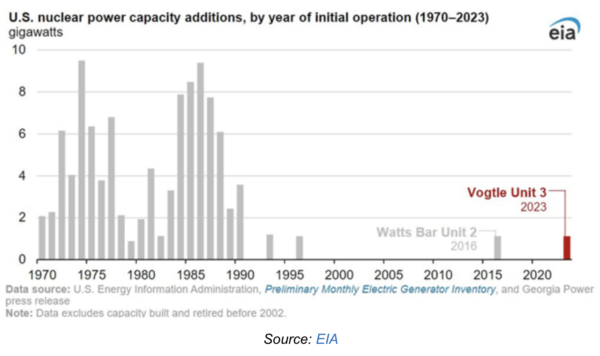I once asked a French acquaintance how it was that France managed to build over 5o nuclear power plants over the same time period that the U.S. built virtually none, and his answer was basically that France didn’t pay any attention to Jane Fonda. Actually his explanation was more colorful (and accurate). Read this with a French accent in your mind:
“Ah, but it is simple you see: In France, our Communists supported nuclear power, whereas in the U.S., your Communists opposed it.”
True: French labor unions, where Communists have some presence, like nuclear power because it meant lots of union jobs. U.S. progressives say they like labor unions—but they hate construction and electrical unions.
But my follow up question to my French interlocutor is equally pertinent: How did France manage to build nuclear plants so much more cheaply than the U.S.?
“Ah, but it is simple, you see: In France, we have 200 kinds of cheese, but one kind of nuclear plant design. In America it is just the opposite.”
In any case, this figure shows how the U.S. abandoned nuclear power. Imagine how much lower our carbon footprint would be if we had kept up the pace of the 1950-1990 period. (Keep in mind that the plants that came online in the mid-1980s were begun 10 to 15 years before.)
Chaser—Even The Guardian gets it:
When New York’s deteriorating and unloved Indian Point nuclear plant finally shuttered in 2021, its demise was met with delight from environmentalists who had long demanded it be scrapped.
But there has been a sting in the tail – since the closure, New York’s greenhouse gas emissions have gone up.
Castigated for its impact upon the surrounding environment and feared for its potential to unleash disaster close to the heart of New York City, Indian Point nevertheless supplied a large chunk of the state’s carbon-free electricity.
Since the plant’s closure, it has been gas, rather then clean energy such as solar and wind, that has filled the void, leaving New York City in the embarrassing situation of seeing its planet-heating emissions jump in recent years to the point its power grid is now dirtier than Texas’s, as well as the US average.
“From a climate change point of view it’s been a real step backwards and made it harder for New York City to decarbonize its electricity supply than it could’ve been,” said Ben Furnas, a climate and energy policy expert at Cornell University. “This has been a cautionary tale that has left New York in a really challenging spot.”
New York was warned that this would be the outcome, but climate cultists are immune to facts.


Notice: All comments are subject to moderation. Our comments are intended to be a forum for civil discourse bearing on the subject under discussion. Commenters who stray beyond the bounds of civility or employ what we deem gratuitous vulgarity in a comment — including, but not limited to, “s***,” “f***,” “a*******,” or one of their many variants — will be banned without further notice in the sole discretion of the site moderator.